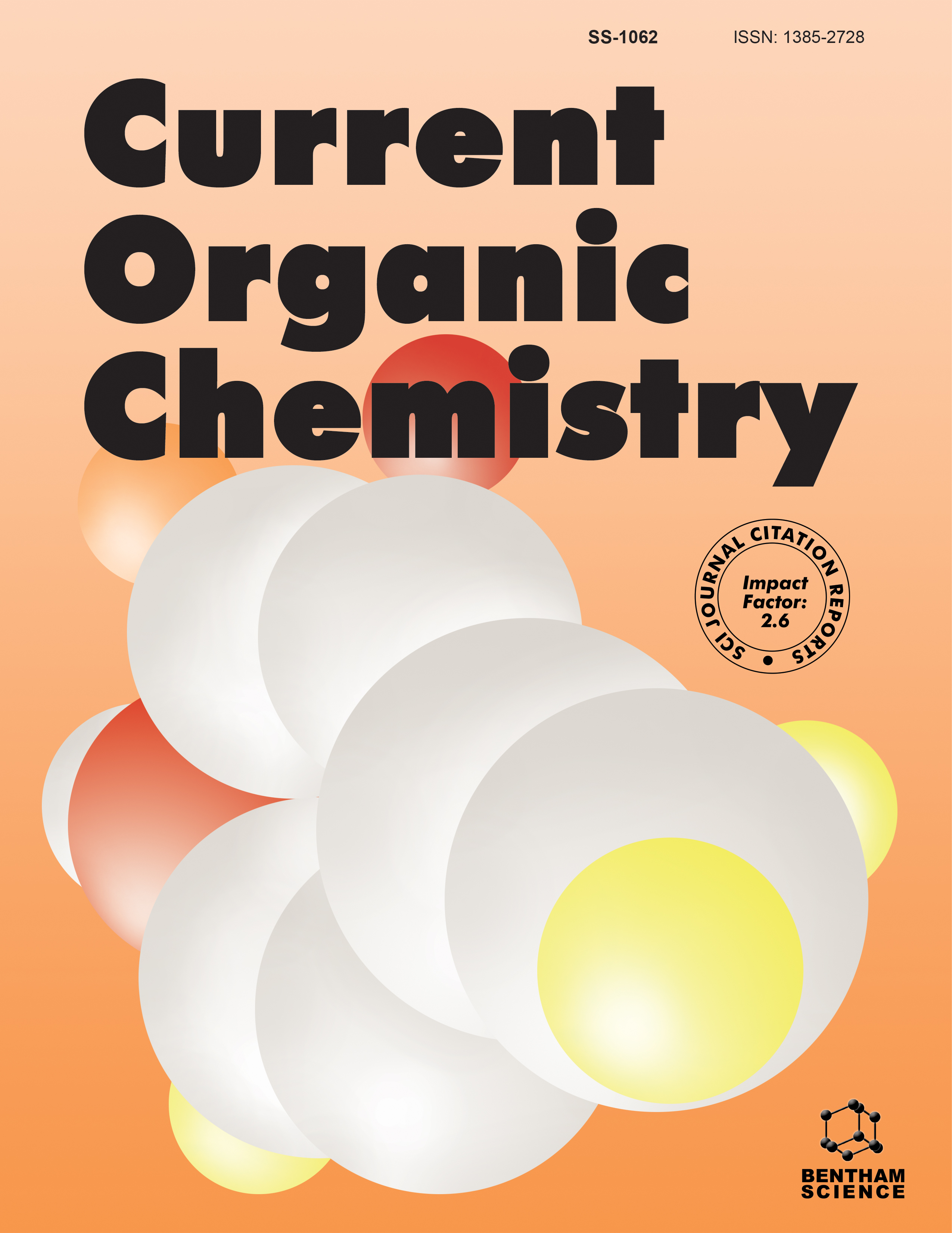- Home
- A-Z Publications
- Current Organic Chemistry
- Previous Issues
- Volume 28, Issue 10, 2024
Current Organic Chemistry - Volume 28, Issue 10, 2024
Volume 28, Issue 10, 2024
-
-
Recent Progress in the Synthesis and Biological Assessment of Benzimidazole-1,2,3- Triazole Hybrids
More LessAuthors: Dileep Kumar Singh, Haider Iqbal and Mohd. A. AnsariIn recent times, many research groups have focused their attention on nitrogencontaining heterocyclic compounds with the aim of gaining a deeper understanding of their biological characteristics. Among them, molecules based on 1,2,3-triazole and benzimidazole have exhibited diverse biological applications and are present in many drug molecules. The purpose of this review is to describe various benzimidazole-1,2,3-tri Read More
-
-
-
Recent Developments in Asymmetric Nazarov Reactions
More LessThe Nazarov reaction involves the cyclization of divinyl ketones into cyclopentenones under the influence of strong acids. The prevalence of five-membered carbocycles in a multitude of natural and bioactive products has triggered an intense development of efficient methods for their construction. In particular, asymmetric versions of the Nazarov reaction are achieved by using either a chiral auxiliary or a chiral catalys Read More
-
-
-
One-Pot Multicomponent Synthesis of Pyrano[2,3-c]pyrazole and 2-Amino-4Hbenzo[ b]pyrans Catalyzed by Hercynite@SiO2@Tris as Novel and Efficient Nanocatalyst
More LessAuthors: Shima Beiranvand, Masoomeh Norouzi and Bahman TahmasbiIn this study, magnetic hercynite nanoparticles (FeAl2O4, MNPs) were functionalized by cheap and readily available tris(hydroxymethyl)aminomethane (Tris) as an organocatalyst. Various techniques, including Vibrating Sample Magnetometry (VSM), Energy Dispersive X-ray Spectroscopy (EDS), X-ray Diffraction (XRD), Scanning Electron Microscopy (SEM), and Thermogravimetric Analysis (TG) Read More
-
-
-
Using Supercritical Diethyl Ether as the Reaction Medium for the Synthesis of 3-Acetyl and 4-Methyl Substituted Coumarins
More LessAuthors: Zeynep Özsırkıntı, Abdul H. Hakimi, Mehmet Erşatır, Murat Türk, Onur Demirkol and Elife Sultan GirayDue to very good biological activity and use as fluorescent probes, coumarin synthesis and developing new synthesis methods are still an attractive area for many research groups. In this work, for the first time, a novel, mild, and green method has been developed for coumarin synthesis by using supercritical diethyl ether as a reaction medium. The optimum conditions for the synthesis of 3-acetylcoumarins and 4-methylcou Read More
-
-
-
Hemisynthesis of Pentacyclic Triterpenoids from Diospyros foxworthyi with In vitro and In silico Anti-malarial Evaluation
More LessA total of twelve pentacyclic triterpenoid derivatives based on betulin (1) and lupeol (2) scaffolds isolated from Diospyros foxworthyi were hemisynthesized by acylation or acetylation reactions with appropriate acid chloride or acetic anhydride. The structures of the hemisynthesised compounds were characterised by means of FT-IR, 1D- and 2D-NMR, as well as HRMS analysis. These compounds were assayed for in vi Read More
-
Volumes & issues
-
Volume 29 (2025)
-
Volume 28 (2024)
-
Volume 27 (2023)
-
Volume 26 (2022)
-
Volume 25 (2021)
-
Volume 24 (2020)
-
Volume 23 (2019)
-
Volume 22 (2018)
-
Volume 21 (2017)
-
Volume 20 (2016)
-
Volume 19 (2015)
-
Volume 18 (2014)
-
Volume 17 (2013)
-
Volume 16 (2012)
-
Volume 15 (2011)
-
Volume 14 (2010)
-
Volume 13 (2009)
-
Volume 12 (2008)
-
Volume 11 (2007)
-
Volume 10 (2006)
-
Volume 9 (2005)
-
Volume 8 (2004)
-
Volume 7 (2003)
-
Volume 6 (2002)
-
Volume 5 (2001)
-
Volume 4 (2000)
Most Read This Month
Article
content/journals/coc
Journal
10
5
false
en


